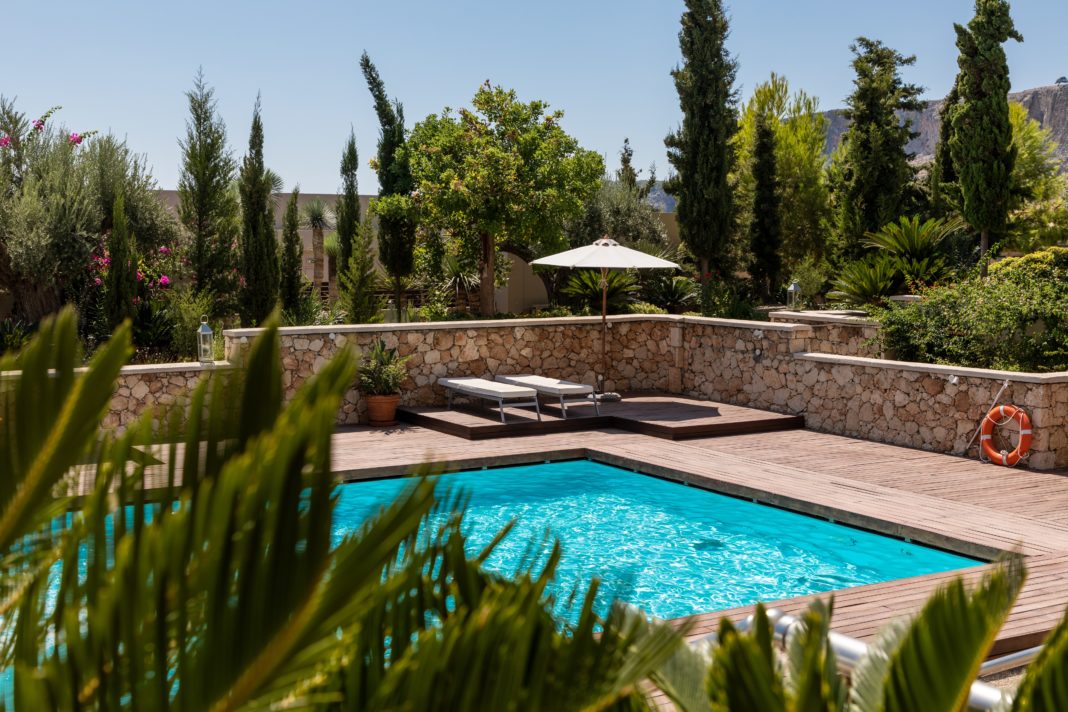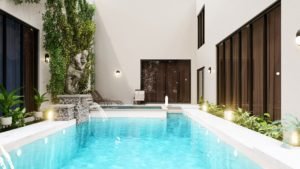A swimming pool can be a place for recreation in your backyard. Your swimming pool requires regular maintenance so that it remains functional. The water in your pool needs circulation, cleaning, and chemicals to remain clear. A good circulation system is the most important aspect of swimming pool maintenance.
Why is the Circulation System so Important for a Swimming Pool?
A good circulation system works for your swimming pool like our heart works for our body. A swimming pool with dirty water is useless. It looks dirty and can become a breeding ground for bacteria and algae. Over time, dust, dirt, makeup and bacteria from the swimmer’s bodies can all contribute to turning the water impure. A good circulation system regularly filters the water and maintains its safety.
Rivers and lakes have the advantage of natural movement. Water in a swimming pool is stagnant. Stagnant water attracts mosquitoes and other insects. The circulation system moves the water during the filtering process. The proper movement also enables chemicals and disinfectants to mix thoroughly in water.
If you have an efficient circulation system, you need to add fewer chemicals to water purification. Fewer chemicals translate into less skin irritation for swimmers. Efficient purification can give swimmers the feeling of swimming in clear water.
Components of Circulation System
1. Pumps
A pump is the main component of the circulation system. There are single-speed pumps and variable speed pumps. Bigger pumps involve more maintenance and energy costs. Your pool builder can help you to select the perfect size pump for your pool. Single-speed pumps work at an excessive speed and require more energy.
It is better to buy a variable speed pump that can be adjusted at a lower setting according to your pool’s needs. It is advisable to run your pump for a minimum of 8 to 10 hours. Some people prefer to run their variable pumps for 24 hours for optimum cleaning. Variable speed pumps can be run for long duration due to their efficient motors.
2. Skimmer.
A skimmer is a rectangle-shaped opening at the top-level of the pool. Many skimmers have a buoyant door. The skimmer draws the water to the circulation system due to the suction generated by the pump. The skimmer filters the debris and dust from the periphery of the water before it reaches the circulation system.
Dust particles trapped by the skimmer collect in a filter basket. This filter basket requires weekly cleaning. If your pool is large you may have to install more than one skimmer. Regular cleaning of the skimmer is necessary for its optimum functioning. Areas below the skimmer may need to be brushed manually for proper cleaning.
3. Return Jet
A jet’s function is to restore clean water to the pool. You can install single or multiple jets. If you have multiple jets in your pool then it is better to place multidirectional pool jets. This thrusts the water into different directions and ensures good circulation.
If you have only one jet, it is better to place it in a downward-facing direction on the skimmer’s opposite side. This position will make sure the water at the bottom of the pool circulates upwards.
4. Filter
The filter has a crucial role to play in keeping your water clean. There are three types of filters like sand filters, DE and Cartridge. Sand filters purify water by passing it through unique sized sand. Sand filters are very economical. They require back washing and regular rinsing. The filter sand may need to be replaced after 6-8 years.
DE filters consist of a dust known as diatomaceous earth. These filters are capable of capturing even minute debris. This is a costly but powerful filter.
Cartridge filters use cartridges to trap dust and debris. The filter cartridges will require replacement after every 3-5 years. The filter cartridges have to be detached and washed with a hose. It is necessary to clean the filter tank properly at regular intervals.
In addition to the above parts, your water circulation system may also involve heater, chlorinator and chemical feeders. Any large debris must be cleaned manually so that it does not get stuck in the pump.
The whole circulation system needs to be inspected periodically to ensure that the equipment is working properly. Any malfunctioning of any one component will affect the entire water circulation system.
5. Turnover Rate
The turnover rate can be defined as the amount of time taken for filtration of the entire water in the pool. This rate depends on the horsepower of your pump, the size of your pipes and other factors. It is believed that passing water through the filtration system 3 to 4 times a day will ensure adequate filtration of the water. You may need some expert guidance to set your pool pump at the proper flow rate as per your pool’s size.
6. Dead Regions
There will always be places in your pool which have faulty circulation. You will find these areas behind the ladder, adjoining pool steps and in cracks. These areas will have to be manually brushed. Concrete pools will have more bacteria and algae. Concrete pools require rigorous brushing once a week.
Fibreglass pools have comparatively lesser dead regions due to their smooth surface. A light brushing will easily detach any dirt from the surface of fibreglass pools.
Brushing your pool releases debris and micro-organisms stuck to the surface. The filter will then throw them out of the pool.
ILL-Effects of Poor Water Circulation
Poor water circulation can lead to water changing its color to green or white due to bacteria formation. Swimming in a dirty pool can cause itchy skin, red eyes and ENT infections. Improper circulation fails to diffuse water cleaning chemicals uniformly into the water.
Inadequate flow rate due to dirty water can reduce the efficiency of the heating equipment. Impure water will also necessitate more spending on cleaning chemicals. Dirty water will ultimately affect the lifespan of your swimming pool.


